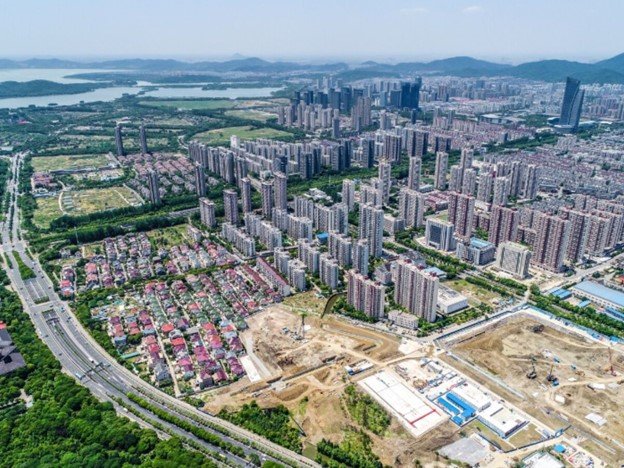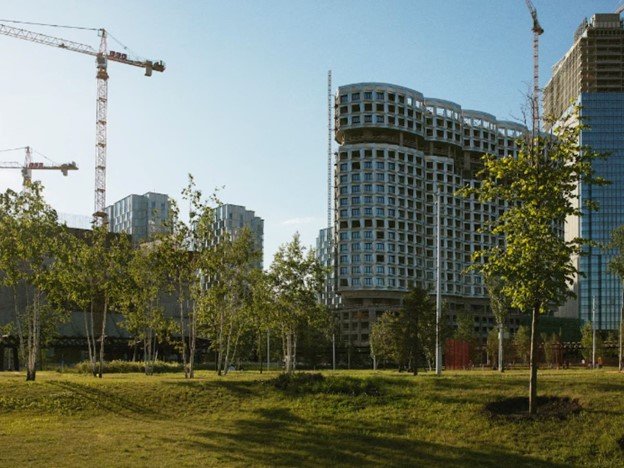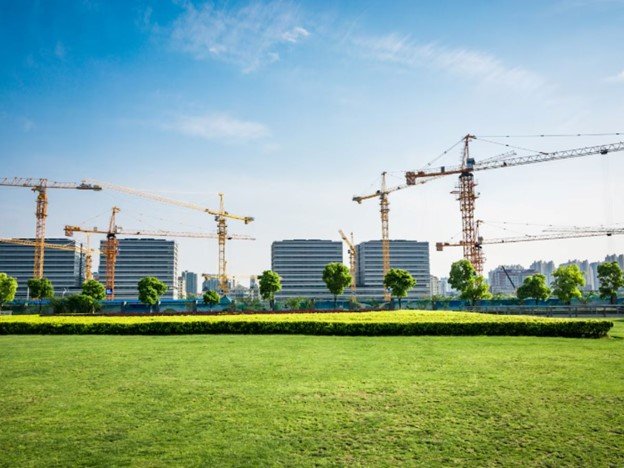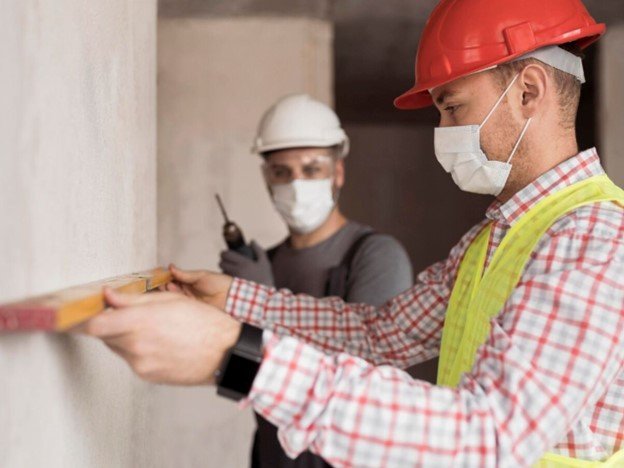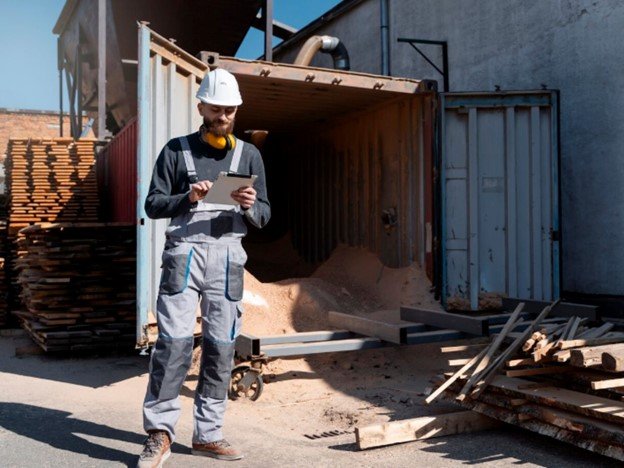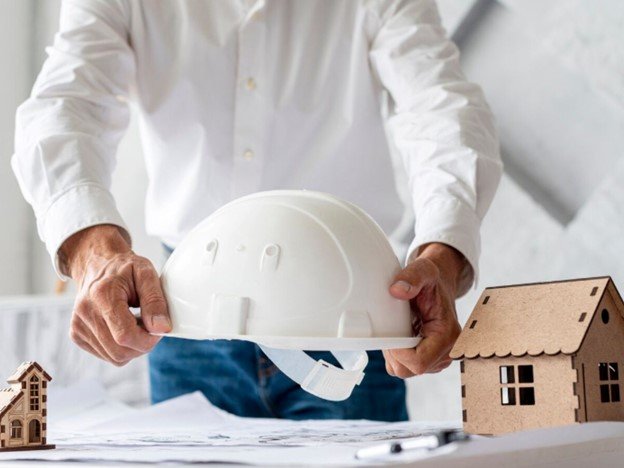How to Plan a Residential Construction Project in the Philippines
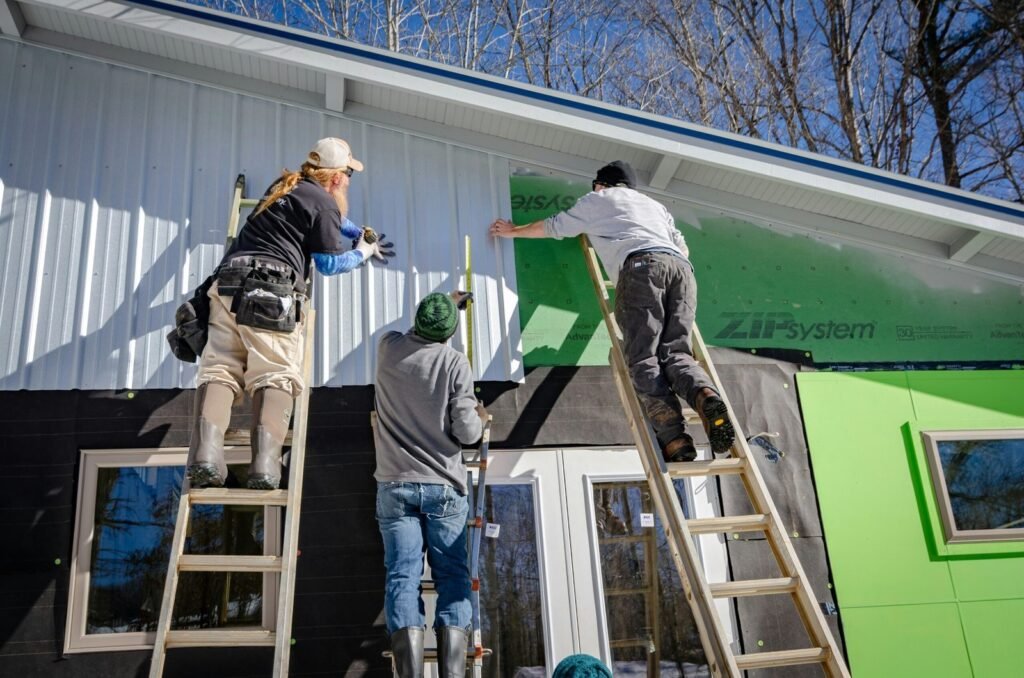
Introduction to Residential Construction in the Philippines
Philippines Mall Construction
Residential construction in the Philippines has experienced significant growth in recent years, driven by increasing urbanization and a burgeoning middle class. This expansion has resulted in a heightened demand for residential properties, ranging from high-rise condominiums in metropolitan areas to single-family homes in suburban and rural regions. Understanding the intricacies of how to plan a residential construction project in the Philippines is essential for ensuring a seamless and successful development process.
The Philippine construction market presents unique challenges and opportunities that potential homeowners and developers must navigate. Factors such as fluctuating material costs, stringent regulatory requirements, and the availability of skilled labor can all impact the planning and execution of residential construction projects. Additionally, the country’s diverse geography, which includes coastal areas and mountainous regions, necessitates careful consideration of site-specific conditions when planning a build.
Proper planning is paramount to overcoming these challenges and capitalizing on the opportunities present in the Philippine construction sector. This involves comprehensive project management, from initial site selection and design to obtaining necessary permits and coordinating with local contractors. Familiarity with local building codes and environmental regulations is crucial to avoid delays and ensure compliance throughout the construction process.
Furthermore, understanding the local context is indispensable for anyone looking to build a home in the Philippines. This includes being aware of cultural norms and preferences that may influence design choices, as well as recognizing the local economic landscape that can affect project financing and budget management. By thoroughly researching and planning for these variables, developers can better anticipate potential obstacles and devise strategies to mitigate them, ultimately leading to a more successful residential construction project.
In essence, the complexity of planning a residential construction project in the Philippines underscores the need for meticulous preparation and a deep understanding of the local environment. With proper planning and a strategic approach, developers can navigate the challenges and harness the opportunities that this dynamic market offers.
When embarking on a residential construction project in the Philippines, the first crucial step is identifying your goals and budget. Clear and realistic goals will serve as the foundation for your planning process. Begin by defining the purpose of the project: Are you building a family home, a rental property, or perhaps a vacation house? Each goal will require a different approach and set of priorities.
Setting realistic expectations is equally important. Consider the size of the property, preferred architectural style, and any specific features you envision. Once your goals are clear, it’s time to align them with your budget. Start by conducting detailed financial planning. This includes obtaining cost estimates for materials, labor, permits, and other expenses. Materials and labor costs can vary significantly depending on the location and quality of the resources used. Therefore, thorough research and multiple quotations from different suppliers and contractors are essential.
Permits and legal documentation are another critical aspect of the budget. The cost of permits can vary, and it is essential to account for these expenses early in the planning stage. Additionally, allocating funds for contingencies is vital. Unexpected issues such as weather delays, supply shortages, or unforeseen construction challenges can arise, and having a buffer in your budget will help you manage these effectively.
To avoid common budgeting pitfalls, consider the following advice: First, avoid underestimating costs. It’s better to overestimate and have a surplus than to face a shortfall mid-project. Second, monitor your expenses closely throughout the construction process. Regularly compare the actual costs against your budget to identify any deviations early. Third, be wary of cutting corners to save money. Compromising on quality can lead to higher maintenance costs in the long run.
By meticulously planning your goals and budget, you set the stage for a successful residential construction project in the Philippines. Taking the time to align your aspirations with financial realities ensures a smoother process and a more satisfying end result.
Choosing the Right Location
Choosing the right location is a critical step in planning a residential construction project in the Philippines. The location of your property can significantly influence both the construction process and the long-term value of your investment. When evaluating potential sites, it is essential to consider several key factors that will impact your project’s success.
Firstly, the neighborhood plays a crucial role in determining the suitability of a location. Look for areas with a good reputation, a low crime rate, and a strong sense of community. Proximity to essential services such as schools, hospitals, markets, and public transportation should also be a priority. These amenities not only enhance the quality of life for future residents but also contribute to the property’s value.
Accessibility is another vital consideration. Ensure that the site is easily accessible by major roads and highways, which will facilitate the transportation of construction materials and ease the commute for future homeowners. Additionally, consider the safety of the area, taking into account natural disasters such as floods and earthquakes, and ensure that the location meets the necessary building codes and safety regulations.
Future development plans in the vicinity can also influence your decision. Areas with upcoming infrastructure projects, commercial developments, and community facilities are likely to appreciate in value over time. To gain insights into these plans, conduct thorough research using local government resources and consult with real estate experts who are familiar with the region. Their expertise can provide valuable information on market trends, zoning laws, and potential growth areas.
Conducting comprehensive due diligence is paramount when selecting a location. Visiting the site multiple times, speaking with locals, and analyzing real estate market reports can provide a clearer picture of the area’s potential. By carefully evaluating these factors, you can make an informed decision that will positively impact both the construction process and the long-term value of your residential property in the Philippines.
Understanding Legal Requirements and Permits

When planning a residential construction project in the Philippines, understanding the legal requirements and securing the necessary permits is crucial. The process begins with obtaining a Building Permit from the local government unit (LGU). This permit ensures that the planned construction complies with the National Building Code of the Philippines, which sets the standards for design, construction, and occupancy of buildings within the country.
Additionally, the project must adhere to local zoning laws, which dictate the land use and the type of structures that can be built in specific areas. Violation of these laws can result in significant fines or even the demolition of the non-compliant structure. Therefore, it is essential to review the Comprehensive Land Use Plan (CLUP) of the municipality or city where the property is located.
Securing a Building Permit involves several steps, including the submission of detailed architectural and engineering plans, a site development plan, and other pertinent documents. The process typically requires coordination with various local government offices, such as the Office of the Building Official (OBO), the Bureau of Fire Protection (BFP), and the Department of Environment and Natural Resources (DENR) if environmental compliance certificates are needed. The approval process can take anywhere from a few weeks to several months, depending on the project’s complexity and the efficiency of the local government offices.
Potential hurdles in this process include delays in document processing, additional requirements imposed by the LGU, and the need for multiple revisions of the submitted plans. To navigate these challenges effectively, it is advisable to work closely with experienced legal professionals and local government agencies. Engaging a reliable contractor who is familiar with the local building codes and permit processes can also expedite the approval timeline.
In summary, understanding and adhering to the legal requirements and obtaining the necessary permits are pivotal steps in effectively planning a residential construction project in the Philippines. Proper compliance not only ensures the project’s legality but also contributes to the safety and sustainability of the built environment.
Designing Your Home: Working with Architects and Engineers
When embarking on a residential construction project in the Philippines, the roles of architects and engineers are pivotal. These professionals are responsible for transforming your vision into a tangible reality, ensuring that every aspect of the design is meticulously planned and executed. Selecting reputable architects and engineers is crucial; their expertise can significantly influence the success of your project.
To find and select reputable professionals, start by seeking recommendations from friends, family, or colleagues who have undertaken similar projects. Online platforms and professional organizations, such as the United Architects of the Philippines (UAP) or the Philippine Institute of Civil Engineers (PICE), can also provide valuable leads. When evaluating potential candidates, review their portfolios, verify their credentials, and check for any licensure or certification requirements specific to the Philippines.
The design process typically begins with initial concepts, where your ideas and preferences are discussed and translated into preliminary sketches. This stage is crucial for establishing the project’s overall direction and scope. As the design progresses, these concepts are refined into detailed blueprints, which include architectural, structural, and MEP (mechanical, electrical, and plumbing) plans. These comprehensive documents serve as the foundation for obtaining necessary permits and approvals from local authorities.
Clear communication and collaboration between you, the architects, and the engineers are essential to ensure that the design aligns with your vision and complies with local building regulations. Regular meetings and updates can help address any concerns and make necessary adjustments to the plans. Additionally, incorporating sustainable and energy-efficient features into your design can provide long-term benefits, such as reduced utility costs and a smaller environmental footprint. Consider elements like natural ventilation, solar panels, and rainwater harvesting systems to enhance the sustainability of your home.
By working closely with skilled architects and engineers, you can navigate the complexities of the residential construction process in the Philippines, ensuring that your dream home is both beautiful and functional.
Hiring Contractors and Managing Construction

Successfully navigating how to plan a residential construction project in the Philippines hinges significantly on hiring reliable contractors and effectively managing the construction process. Selecting the right contractors is critical, as it directly impacts the quality, timeline, and budget of your project. Begin by thoroughly vetting potential contractors. Ensure they have a solid track record by checking their references and previous work. It is advisable to visit previous project sites or speak directly with past clients to gauge their satisfaction and the contractor’s reliability.
Understanding contract terms is paramount. Ensure the contract clearly outlines the scope of work, payment schedule, deadlines, and any penalties for delays. A comprehensive contract safeguards both parties and minimizes ambiguities that could lead to disputes. Before signing, have a lawyer review the contract to ensure it aligns with local regulations and adequately protects your interests.
Effective project management is essential to keep the construction on track. Establish clear milestones and a detailed timeline. Regular site visits are crucial; they allow you to monitor progress, address issues promptly, and ensure the work meets your standards. Maintaining open communication with your construction team fosters a collaborative environment, making it easier to manage expectations and resolve conflicts.
Delays and issues are almost inevitable in construction projects. Being prepared to handle these challenges is vital. Develop a contingency plan for potential delays, including a buffer in your timeline and budget. Address issues promptly to prevent them from escalating. Open and honest communication with your contractor about any concerns or delays can lead to faster, more effective solutions.
By meticulously planning, choosing the right contractors, and actively managing the construction process, you can significantly enhance the likelihood of your residential construction project in the Philippines being completed successfully, on time, and within budget.
Monitoring Progress and Quality Control
Ensuring the success of a residential construction project in the Philippines involves diligent monitoring of progress and rigorous quality control. Regular inspections are integral to this process, allowing stakeholders to track the project’s advancement and identify potential issues early. Conducting these inspections at key milestones ensures that each phase of construction adheres to the planned timeline and meets the required standards.
Documentation is crucial in monitoring construction progress. Keeping detailed records of every aspect of the project helps in tracking accomplishments and identifying any discrepancies that may arise. These records should include dates, materials used, labor deployed, and any deviations from the original plan. By maintaining comprehensive documentation, stakeholders can make informed decisions and address problems promptly, minimizing the risk of costly delays or rework.
Professional inspectors play a pivotal role in quality control. Engaging experienced inspectors ensures that the construction meets the specified standards and complies with the approved design. These professionals bring an objective perspective and can identify issues that might be overlooked by those closely involved in the project. Their expertise helps in verifying that materials and workmanship are of the highest quality, thereby safeguarding the structural integrity and longevity of the residential property.
It is also advisable for homeowners to stay actively involved in the project. Regular site visits and communication with the construction team foster transparency and accountability. This involvement helps homeowners stay informed about the project’s progress and any potential challenges. It also enables them to make timely decisions, ensuring that the project stays on track and within budget.
In summary, monitoring progress and maintaining quality control are essential components of planning a residential construction project in the Philippines. Through regular inspections, meticulous documentation, professional oversight, and active homeowner involvement, stakeholders can ensure that the construction is completed to the highest standards, resulting in a safe and durable home.
Completing the Project: Final Inspections and Moving In

As the construction phase of your residential project in the Philippines draws to a close, it is essential to focus on the completion steps to ensure a smooth transition to your new home. One of the critical stages is conducting final inspections. This involves a thorough walk-through with your contractor to scrutinize every aspect of the construction. Attention to detail during this phase is crucial; any discrepancies or unfinished tasks should be addressed promptly. Ensuring that all elements meet the agreed-upon standards will help avoid future complications.
During the final inspections, you must verify that all systems, including electrical, plumbing, and HVAC, are functioning correctly. It is also advisable to check for any cosmetic issues, such as paint touch-ups or fixture installations. If any issues are found, create a punch list and work with your contractor to resolve them before moving forward.
Once you are satisfied with the final inspections, the next step is to obtain the necessary occupancy permits. In the Philippines, these permits are crucial for legally occupying your new residence. The process typically involves submitting required documentation to local government units and passing specific safety inspections. Ensuring all permits are in place will prevent legal hassles and provide peace of mind.
Preparing for the move-in process involves coordinating various tasks to ensure a seamless transition. Setting up utilities and services, such as water, electricity, internet, and waste management, should be done in advance. Contact the respective providers to schedule installations or transfers to your new address. Additionally, consider arranging for a professional cleaning service to prepare the home for occupancy.
Moving into your new home marks the culmination of your residential construction project. To make the transition as smooth as possible, create a moving timeline, and organize your belongings systematically. Label boxes clearly and transport essential items first. By carefully planning each step, you can ensure that moving into your new home is a celebratory and stress-free experience.





